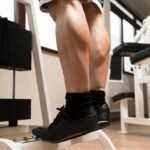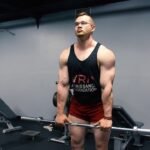Barbell Back Squat: Exercise Overview
The barbell back squat is a foundational compound exercise renowned for its ability to engage multiple muscle groups, including the quadriceps, hamstrings, glutes, core, and lower back, with secondary involvement of the shoulders and arms. Often hailed as the “king of exercises,” it activates over 200 muscles in a single movement, making it a staple for bodybuilders, powerlifters, and athletes alike (Schoenfeld, 2010).
For powerlifters, it’s one of the “big three” lifts alongside the deadlift and bench press, serving as a key measure of lower-body strength. Athletes benefit from its correlation with explosive on-field performance, while bodybuilders use it to sculpt a powerful lower body and core. Variations and foot placement adjustments allow customization to emphasize quads or hamstrings, accommodating individual biomechanics and goals. The barbell back squat is ideal for leg workouts, lower-body sessions, or full-body routines, but proper form is critical to maximize benefits and minimize injury risk (Escamilla et al., 2001).
Variations:
- Bodyweight Squat
- Front Squat
- Dumbbell Squat
- Machine Hack Squat
- Smith Machine Squat
How to Perform the Barbell Back Squat
- Set the barbell on a rack just below shoulder height and load it with an appropriate weight.
- Stand under the bar with feet shoulder-width apart, positioning it on your upper traps (not your neck). Use padding if needed for comfort.
- Grip the bar with a wide overhand grip for stability, then bend your knees and straighten your back to unrack the weight.
- Take a small step back to clear the rack, keeping your eyes forward and core braced—this is your starting position.
- Lower your body by pushing your hips back and bending your knees, keeping your chest up and back straight, until your thighs are at least parallel to the floor.
- Drive through your heels to return to the starting position, stopping short of locking out your knees to maintain tension.
- Repeat for the desired number of repetitions.
Tips for Optimal Performance
- Master Technique First: Prioritize proper form over heavy weights to prevent injury, particularly to the lower back. Incorrect form can lead to pain or strain (McGill, 2010).
- Maintain a Straight Back: Keep your chest up, shoulder blades retracted, and core engaged to avoid rounding your back, which reduces spinal stress (Escamilla et al., 2001).
- Push Through Heels: Drive through your entire foot (big toe, little toe, heel) to distribute force evenly, avoiding excessive pressure on the balls of your feet, which can strain joints.
- Control the Descent: Lower slowly to maintain control and prevent leaning forward, ensuring your hips drop straight down rather than forward.
- Squat to Depth: Aim for thighs parallel to the floor or slightly below to maximize muscle engagement, but only within your comfortable range of motion.
- Keep Knees Aligned: Ensure your knees track over your toes without collapsing inward or outward to protect the joints.
- Adjust Foot Placement: Place feet forward to emphasize quads or slightly wider to target hamstrings and glutes, experimenting to find what suits your biomechanics (Wirth et al., 2016).
- Breathe Properly: Inhale deeply before descending and exhale as you push up to support core stability and muscle oxygenation.
- Use a Spotter or Safety Pins: Set safety pins at an appropriate height and consider a spotter for heavier lifts to ensure safety and confidence.
Powering up with back squats? Learn how they target quads and glutes in our Ultimate Guide to Muscle Groups.







